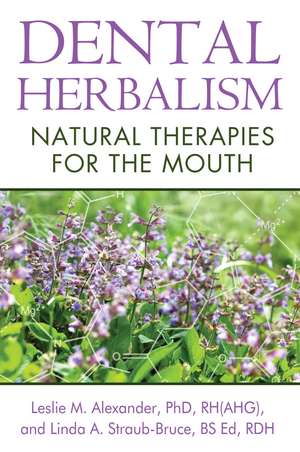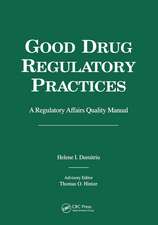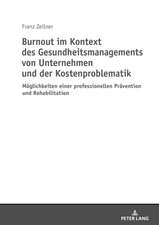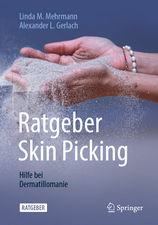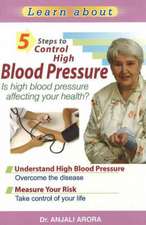Dental Herbalism: Natural Therapies for the Mouth
Autor Leslie M. Alexander Ph.D., RH(AHG), Linda A. Straub-Bruce BS Ed, RDHen Limba Engleză Paperback – 3 aug 2014
Preț: 133.60 lei
Preț vechi: 148.45 lei
-10% Nou
25.57€ • 27.79$ • 21.49£
Carte disponibilă
Livrare economică 31 martie-14 aprilie
Specificații
ISBN-10: 1620551950
Pagini: 488
Ilustrații: Includes 8-page color insert and 50 b&w illustrations
Dimensiuni: 152 x 229 x 25 mm
Greutate: 0.66 kg
Editura: Inner Traditions/Bear & Company
Colecția Healing Arts Press
Locul publicării:Rochester, United States
Notă biografică
Leslie M. Alexander, Ph.D., RH(AHG), is a medical herbalist and former research scientist. A professional member of the American Herbalists Guild, she is co-owner of Restoration Herbs. Linda A. Straub-Bruce, BS Ed, RDH, is a practicing registered dental hygienist and member of the American Dental Hygienists Association. Both authors are members of the American Academy for Oral Systemic Health and live in western Pennsylvania.
Extras
Gum Diseases
Periodontitis refers to inflammation “around” (peri-) the “tooth” (-odons), namely our gums and the bones that support our teeth.
Periodontitis is not something to ignore. It is of concern because the mouth is not isolated from the rest of ourselves. Inflammation in the mouth can antagonize our general health, weaken our immune health, and lead to chronic inflammation not just in the mouth but throughout the body.
The American Academy of Periodontology now estimates that about 47 percent, or 65 million, American adults have mild, moderate, or severe periodontitis.
The question is: Is periodontitis inevitable and preventable?
The answer: Preventable (entirely).
However, often periodontitis can be a “silent disease,” presenting without a single recognizable symptom. With the exception of very small changes to our gum tissues, sometimes only observable by trained professionals, we may appear entirely symptom free. As periodontitis advances, we move further and further away from a healthy mouth, inflammation becomes chronic, and we set up a cascade of inflammation throughout the body. In more severe situations, it cannot be reversed. We must not wait until it’s too late.
However, before discussing diseased gums, we need to be able to recognize healthy gums.
Healthy Gums
If we think of our gums as holding our teeth in place, then it makes sense that our gums are firm and not spongy.
Healthy gums don’t allow our teeth to jiggle when we walk. They rise up to greet each tooth at its edge and then fall away slightly before rising up again to greet an adjacent tooth. Healthy gums fill the spaces between our teeth. Some people say that our gums “grasp” the bases of our teeth.
What is Gum Disease?
Here we focus on two of the most common types of gum disease, gingivitis and periodontitis. Together these encompass the “mild,” “moderate,” and “severe” forms of gum disease that are rampant in the U.S. adult population.
Gingivitis
Simply put, gingivitis is inflammation of the gums. It is the mildest form of gum disease. Gingivitis is preventable. It is easily reversed with proper oral hygiene, attention to food and drink, regular dental cleanings, and an overall regard for well-being.
Typically, gingivitis is caused by an accumulation of plaque, a biofilm of microorganisms, which attaches to our teeth. Over time, when not removed, irritation results along the gum line. Left unattended, this sticky bacteria-laden deposit hardens and becomes tartar, a hard calcium deposit that we surely want to avoid.
If gingivitis is allowed to persist, a vicious cycle begins. The gums remain swollen and begin to trap even more bacteria. This is how the disease progresses.
Gingivitis may not always lead to chronic periodontitis, however all chronic periodontitis is precededby gingivitis.
Periodontitis
Periodontitis is the next rung on the periodontal disease ladder. It is characterized by the spreading of inflammation beyond the gum tissue to the supporting structures of the teeth, including the bone around the teeth. Once referred to as “pyorrhea,” periodontitis is irreversible. Although we can stop its progression, whatever destruction occurs as a result of periodontitis remains permanently. When bone is lost, it’s lost. For good.
Coming to Grips with Chronic Periodontitis
The first step is identifying the disease. This means scheduling a dental appointment. If gum disease is present, a dental professional’s interpretation of symptoms following an examination will shed light on how best to intercede.
Intervention Strategies
There are both surgical and nonsurgical techniques available to us. A less invasive nonsurgical intervention is everyone’s preferred first choice.
A dentist or dental hygienist may perform nonsurgical periodontal treatment, sometimes called “deep scaling” or “scaling and root planing.” Scaling removes deposits of plaque and tartar both above and below the gum line. The clean tooth surface will be smooth, providing ample opportunity for the gums to “tighten” around the tooth. Inflammation will slowly subside because irritants, plaque and tartar, have been removed.
For the majority of people, scaling constitutes an initial intervention, although maintenance will last a lifetime. Follow-up dental interventions will include periodontal probing. This is done periodically to monitor pocket depth. If surgery is warranted, a general dentist or periodontist will make recommendations accordingly. However, we should realize that surgical interventions can be avoided in all but extreme situations with a commitment to care.
Herbal Interventions
Herbal remedies--topically, systemically, and as mouth washes--can be used with considerable success, from supporting and sustaining healthy gums and everyday care through the care of chronic periodontitis. The key is blending herbs to address symptom experiences and possible pathogens in the mouth.
Mouthwashes are suggested for the routine care of our mouths. Antimicrobial herbs, such as sage, rosemary, thyme, and stevia, form quite palatable, even delicious, bases. While these herbs each have antimicrobial activity, the addition of calendula, cleavers, yarrow, and myrrh can be added if gingivitis or periodontitis is of concern.
As disease progresses we look toward changing the balance of a formula. It would be simple to provide a fixed formula for each stage of inflammation. However, this would leave little if any room for understanding herbal formulation or gaining confidence when it came to adjusting a blend of herbs to meet a changing situation. Perhaps most importantly, such an approach fails to consider the individual.
Mouthwashes can be a pleasure to formulate. They are also medicines and are best formulated to meet the current needs of each person.
In the presence of a shifting microbial population, it is important to moderate herbs to enhance immune responses while also providing antiseptic and antimicrobial support, enhancing oxygenation of the tissues and astringing (tightening) the gums.
Cuprins
Acknowledgments
Foreword by M. Leslie Williams, RH(AHG), M Ed
Foreword by William D. Hammerlee, DMD, FAGD
Foreword by K. P. Singh Khalsa, RH(AHG), DN-C
Foreword by Richard Mandelbaum, RH(AHG)
Introduction
Part I
The Lay of the Land
1 It All Begins in the Mouth
Inflammation - Measures of Inflammation - Digestive Health - The Mouth, Disease, and Illness - An Herbal Niche
2 The Mouth and What’s Inside It
Let’s Start with Our Teeth - Parts of a Tooth - Supporting Structures of the Mouth - Sinuses
3 Everyday Care for a Healthy Mouth
Health and Hygiene Basics - Brushing - Tongue Scraping - Flossing - Rinsing -Toothpaste and Tooth Powder
4 Monitoring Oral Well-Being
Keeping Notes - What’s Worth Recording about Our Oral Health? - Taking a Look Inside the Mouth - The Symptom Checklist
5 Getting to Know Your Dental and Herbal Team
A Trip to the Dentist - The Dentist - Other Dental Professionals - Venues - Financing - Herbalists
Part II
From infancy to old age
The Mouth through a Lifetime
6 Pregnancy, Infants, and Toddlers
During Pregnancy - Newborn - Teething - Microbial Transmission from Caregiver to Infant - Thrush - Sucking Thumbs, Fingers, and Pacifiers - Baby Bottle Decay - Tooth Discoloration - Growing Up with Healthy Teeth - Toddler Snacking - The First Dental Visit
7 Tooth Decay
Getting Down to Basics: What Is Decay? - Contributing Factors - Symptoms of Decay - Dealing with Pain - Dental Interventions - Protecting Teeth from Decay
8 Gum Diseases
What Is Gum Disease? - Coming to Grips with Chronic Periodontitis - Preventing Periodontitis - Other Types of Periodontitis
9 Tooth Loss, Replacement, and Orthodontics
When One Tooth Goes Missing - Implants - Bridges - Removable Partial Dentures - Dentures - Prostheses for the Masses
10 Habits, Conditions, and Diagnoses Affecting the Mouth
How to Use the Symptom Checklist - Summaries of Commonly Occurring Conditions Seen in General Dental Practice
Acid Reflux/GERD - Amalgam Tattoo - Angular Cheilitis - Black Hairy Tongue - BRONJ/ONJ - Bruxism - Candidiasis - Canker Sores (Aphthous Stomatitis) - Caries - Cysts/Tumors - Denture Sores - Diabetes - Eating Disorders - Erosion - Fluorosis - Glossitis - Gum Disease - Gum Recession - Herpes - HIV/AIDS - Human Papillomavirus (HPV) - Hyperplasia - Infection - Kawasaki Disease - Leukoplakia - Lichen Planus - Meth Mouth - Mouth Breathing - Nail Biting - Nicotine Stomatitis - NUG/Vincent’s Disease (Trench Mouth) -Nutritional Deficiencies - Oral Cancer - Oral Piercings - Osteoporosis - Papilloma - Pemphigus vulgaris - Pericoronitis - Pharmaceutical-Related Oral Issues - Root Resorption - Sinusitis - Sjögren’s Syndrome - Smoking - Stress - TMJ Disorders - Torus/Tori/Exostoses - Trauma/Injury - Wisdom Teeth - Xerostomia (dry mouth)
Part III
Herbs for the Mouth
11 An herba l Materia Medica for the Mouth
An Introduction to the Materia Medica - The Herbal Materia Medica Arnica - Barberry - Barley - Bee balm - Calendula - Cardamom - Cayenne - Chamomile - Cinnamon - Clove - Echinacea - Fennel - Goldenseal - Hops - Kava - Lavender - Lemon balm - Marshmallow - Milky oats - Myrrh - Neem - Oak - Orange peel - Peppermint - Plantain - Prickly ash - Propolis - Red clover - Red raspberry leaf - Rose hips - Rosemary - Sage - Salt - Skullcap - Slippery elm - Stevia - Thyme - Turmeric - Willow - Wintergreen - Yarrow
12 How To Prepare Herbal Remedies
About Identification and Assessing Quality - Dosing - Making Herbal Remedies: Teas, Decoctions, Poultices, Tinctures, and More - Herbs by Action - Herbs by Symptom - Hands-on and How-to
Part IV
Sustaining a Healthy Mouth
13 Food and Drink
Healthy Food Choices - The Truth about Sugar - Saliva, pH, Snacking, and Sugary Drinks - Hydration - Vitamins and Minerals - Nourishment during Pregnancy - Foods and Beverages that Stain - Eating Seasonally
14 The Mouth as a microcosm of the Body
The Oral-Systemic Connection - Taking an Oral Health History - Frequently Asked Questions
15 Changing Ideas
Current Issues Affecting Oral Health
Access to Oral Health Care - Alcohol in Oral Health Care Products - Antibiotic Use - Bisphenol A (BPA) - Dental Amalgam (contains mercury) - Fluoride - Gluten - Green Heath Care Offices - Health and Dental Insurance - Herbal Supplements - Herbicides and Pesticides - Latex - Probiotics - Radiation (dental) - Radiation (irradiated foods) - Real Food - Sodium Lauryl Sulfate (SLS) - Triclosan
Concluding Remarks
Appendix 1 Professional Organizations
Appendix 2 Suppliers of Herbs and Oral Care Products
Appendix 3 Herba l Cultivars and Wildcrafting
Appendix 4 Useful Conversions, or Your Pint’s Bigger than my pint
Appendix 5 Oral Health Charts and Tables
Glossary
About the authors
Index
Recenzii
“The authors have provided an excellent overview of oral conditions and relevant discussion of anatomy through this well-thought-out text. They also further provide non-pharmaceutical methods to prevent oral disease that complement traditional, well-accepted approaches for maintaining oral health. I commend both authors and would encourage the layperson and clinicians alike to read this text.”
“The accessible and detailed information in Dental Herbalism is required reading. Whether you want to do it yourself or simply be more knowledgeable about how to support what your dentist is doing, you’ll find it here. A great book.”
“Dental Herbalism takes holistic herbalism to a new level, applying it to the realm of oral hygiene. This book will make an invaluable contribution to integrative herbal medicine and a resource for all types of health practitioners.”
“Dental Herbalism empowers personal responsibility for dental health. It is rich with lifestyle and hygiene tips and reliable herbal references. For health professionals it offers a clinical depth that will serve as a resource for clinical herbalists and dental professionals alike.”
“An essential guide to natural oral health, Dental Herbalism is full of useful advice--herbal and otherwise. I had never truly understood how important a healthy mouth and teeth were for health and well-being.”
“I fully endorse Dental Herbalism: Natural Therapies for the Mouth.”
“Dental Herbalism is an easy-to-read guide on oral health and herbal medicinals and is a must read for both patients and dental professionals.”
“This is an extremely informative, reader-friendly resource of natural remedies for the dental professional and their patients.”
“Written in a comprehensive style that allows for effortless integration into today’s practice of dentistry. Kudos to the authors for a job well done!”
“Dental Herbalism carves a unique place in the terrain of medical herbalism. It is thorough, drawing upon the expertise of senior practitioners alongside contemporary research. It is my go-to reference for dental care.”
“Dental Herbalism presents us with valuable insight into a topic that has previously been allotted only a page or two in most herbals. It offers a truly holistic perspective of dental wellness that’s sure to enrich both herbalists and dental professionals alike.”
“The in-depth knowledge and the practical approach to herbal oral care contained between the covers of this book will change the way you look at and deal with your mouth and teeth.”
Descriere
Our oral health is intimately linked with our overall health and well-being. In this practical guide to herbal dental care, medical herbalist Leslie Alexander and registered dental hygienist Linda Straub-Bruce detail how to use 41 safe and effective herbs for the mouth for optimum oral health, prevention of decay and inflammation, and relief from pain and discomfort. The authors provide recipes for herbal toothpastes and rinses, poultices for pain and inflammation, and teas and tinctures for intervention, prevention, and daily care. They explain how recent research confirms the link between poor oral health and many diseases, such as diabetes, stroke, and heart disease. They examine the risk factors, symptoms, causes, and herbal preventives and remedies for 47 common conditions that affect the mouth, such as gingivitis, periodontitis, bruxism, acid reflux/GERD, and tooth loss. They explore the complete anatomy of the mouth and explain proper brushing, flossing, and tongue-cleaning techniques to prevent tooth decay and gum disease and maintain bridges, implants, and braces. The authors address the importance of diet and nutrition in oral health as well as controversial topics including flouride. They provide an in-depth chapter on pregnancy, infant, and childhood oral care, including herbal remedies for teething and thrush. Ideal for those looking to improve their own oral health, herbalists looking to address the root cause of systemic inflammation, or dental professionals searching for natural alternatives, this authoritative yet practical guide empowers each of us to reclaim the health of our mouths and sustain a full, strong set of teeth for a lifetime.
